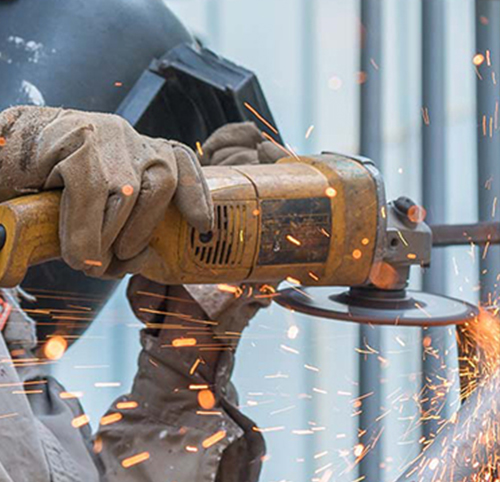The Importance of Steel in Constructing Bridges
The Importance of Steel in Constructing Bridges
Around the globe, steel bridges of all sizes are constructed from very large to extremely small. It is a versatile and effective material that delivers efficient and sustainable solutions. For decades, steel has been the predominant construction material for numerous types of bridges due to its economic advantages.
Ages back, people used floating tree logs and rocks for the purpose of crossing rivers. That’s when man felt the necessity to come up with strong permanent structures to get the job done. Bridges are one of the most astonishing inventions ever. From the beginning, each bridge builder tried to outdo others in increasing efficiency. Through these evolved different types of bridges and different construction materials. Options like steel, stone, rocks, concrete, ropes are used to build bridges, but here is our report on advantages and the importance of steel in constructing bridges.
Types of Bridges Made from Steel
> Beam Bridges–This bridge consists of a horizontal beam that is supported at each end by piers
> Arch Bridges–It is a bridge shaped as an upward convex curved arch to sustain the vertical loads
> Cable Stayed Bridges– A bridge in which the weight of the deck is supported by a number of nearly straight diagonal cables held in tension running directly to one or more vertical towers
> Suspension bridges-A type of bridge in which the deck is hung below suspension cables on vertical suspenders
Why is Steel the Ideal Material for the Construction of Bridges?
- Construction Cost
Constructing a huge structure like a bridge is undoubtedly an expensive project to execute. Keeping all the other overheads in mind, the structure should be constructed as cost-efficiently as possible without compromising on the quality. Steel is comparatively less expensive, widely available and easy to work with.
- Aesthetic Value
Steel bridges are not just technically sound and a rational choice, but also truly things of beauty. Landscape photographers have captured the grace of steel bridges across the world.
Here are a few famous masterpieces in steel:

Howrah Bridge- Calcutta, West Bengal

Brooklyn Bridge –Brooklyn, New York

Infinity Bridge- Dubai, UAE
Sydney Harbour Bridge – Sydney, Australia
- Speed of Construction
Construction of a huge structure is time consuming and impacts regular life of the entire locality by disrupting traffic flow. The faster a bridge can be erected, the more it is appreciated by all. Using castellated beams and structural steel for a bridge project speeds up the construction and can even reduce on-site labour requirements and costs.
- Structural Longevity
Another major advantage in using steel is its durability. Based on extensive research made in the past, it has been proved that bridges made up of steel have lasted way longer than its other equivalents. Bridges made of wood, stone and concrete tend to develop damages which require heavy maintenance, and it further jeopardises the normal rhythm of life and traffic.
- Durability and Flexibility
Steel structures are less likely to be damaged during any natural calamities because of flexibility. During earthquakes, hurricanes, landslides or thunderstorms, steel structures are least likely to get damaged whereas concrete bridges develop massive cracks during earthquakes. Stone structure loses strength to hold on and timber bridges start to rot from water. Expansion and contraction with change in temperature affects wood and concrete structures whereas the sturdiness of steel hardly gets affected due to its character of minimum contraction and expansion.
- Less Tonnage
Steel bridges exerts the least amount of pressure since it is the lightest among all construction materials. In the course of time, heavy objects start to gradually sink deeper into mother earth which makes the structure vulnerable to future calamities.
- Low Maintenance
As quoted by JA Wadell, “The life of a steel bridge that is scientifically designed, honestly and carefully built, and not seriously overloaded, if properly maintained, is indefinitely long”. Steel bridges have a proven life expectancy of over 100 years. Due to the visibility and accessibility of the structural elements, steel has a predictable life. It is unnecessary to conduct extensive investigations to spot any signs of deterioration. Additionally, corrosion, a surface effect, rarely compromises the structural integrity of a steel bridge, and any problems can be rectified promptly by repainting the affected areas which has the potential to easily last more than 3 to 4 decades.
The above factors show why steel as a bridge constructing material clearly has a decent edge over its competitors. Steel is the ideal material for the purpose of building bridges due to its eco-friendly nature, low maintenance and cost-efficient aspects. Apart from these, previous studies on bridges collapsing or construction failures reveal that concrete and timber bridges are way more susceptible than steel structures. So steel is the most reliable, strong, cost effective and easily maintainable bridge rather than using the other materials for building up a bridge.
For more information on steel structures, contact Pinax. India’s leading PEB company. We manufacture premium quality steel structures for various applications ranging from industries, restaurants, educational institutes to bridges, aircraft hangars and even shopping malls.

